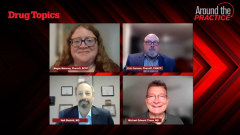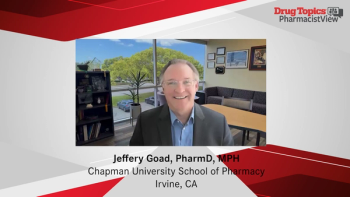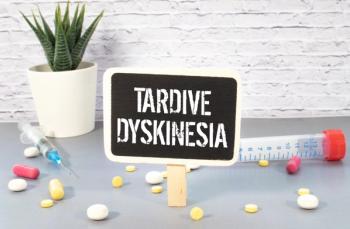
Current TRD Treatment Model: Part 2
An in-depth assessment of treatment-resistant depression therapies is explored.
Episodes in this series

Neil Skolnik, MD: Eric, you mentioned frequent follow-up. That’s an important issue. I talk to our residents about seeing patients back frequently at the beginning of treatment. Part of the reason is something you alluded to earlier, which is adherence. My sense is that patients with depression often have a lot of adverse effects that they notice from their medicines: GI [gastrointestinal] adverse effects, sexual adverse effects. They stop taking them unless No. 1, you warn them ahead of time, or No. 2, you see them back and say, how are you doing on it? That helps adherence. Also, it allows us to do something in addition to giving the medicines during those first 6 weeks that has an impact: listening to how they’re doing and what’s going on and doing mini–CBT [cognitive behavioral therapy]. I’ll hear catastrophizing things, such as, “I’ll never get better.” [I’ll say that] when we talked before, their PHQ-9 [Patient Health Questionaire-9] was 15 but now it’s 13. “Are you feeling somewhat better?” [Then they’ll say] “Well, a little.” You will get better. Give patients hope.
Also, adding things that are easy to do, suggesting behavioral activation, taking a walk. It’s beautiful in Philadelphia today—about 60 °F. Winter has passed. I can say to them to get outside and take that walk that you might not have had the energy to do before treatment. Even if you’re only 50% better by 6 weeks, you might not have the energy to add in behavioral activation. But you might be able to enlist some social supports. You didn’t feel like going out to dinner before, but with a little push, maybe you can get together for dinner with a friend. That enhances the opportunity for the medicines to work overtime as well.
Eric Cannon, PharmD, FAMCP: Let me follow that up. We talked early on about the placebo effect and its impact, and that early example you had with your patient. To what degree is it beneficial for patients to see themselves improving in terms of seeing their PHQ-9 scores get better? Does that provide benefit?
Neil Skolnik, MD: I’ll take it for a minute and then hand it to Michael. One, I’m just going to say, this isn’t all placebo effect. There’s good evidence that exercise, for instance, helps alleviate depression. There’s good evidence that social support helps improve mood and depression. These are separate from defined placebo effects. We can utilize these behavioral therapies to enhance the efficacy of our medicine in addition to the placebo effect that you get if you said, “Here’s some medicine. Good luck.” There’s a bit of a difference there. Michael, I’m interested to hear your thoughts.
Michael Edward Thase, MD: I’m enjoying your presentation. I agree entirely: you need to know what the patient’s normal state is. This is 1 reason why patients with comorbidities have more trouble remitting. If you have other conditions affecting your life adversely, other sources of symptoms and distress, a treatment for 1 condition doesn’t necessarily result in improvement in all your conditions. But if your PHQ-9 is stuck and in the teens, you need to do something different, sometimes markedly different. If you’ve done 2 related medicines—an SSRI [selective serotonin reuptake inhibitor] and an SSNRI [selective serotonin and norepinephrine reuptake inhibitor]—and the patient hasn’t budged, then it’s time to think about an antidepressant combination or something more exotic.
Megan Maroney, PharmD, BCPP: Dr Thase, how do you sequence treatment options for patients?
Michael Edward Thase, MD: [I sequence treatment] from simple to complex, hoping that the simple ones work quickly and are helpful. And 2 of 3 times, that’s true. I have a question for Dr Skolnik, though. When do you send patients? You’re a capable depression treater. When do you send patients to a psychiatrist?
Neil Skolnik, MD: After that second medicine. Let’s say we start with an SSRI and there’s a partial response. Maybe I’ll add bupropion. That’s the next agent I go to if they’re not having a full response at that point. It’s a significant amount of patients—not everybody, but maybe 20% or 30%. That’s when I’ll send a patient [to a psychiatrist] because there’s a host of additional treatments that we don’t use in primary care. Sometimes I’ll use mirtazapine. Usually, [I use] bupropion as my add-on agent. Sometimes I’ll switch from an SSRI to an SNRI if a patient has no response at all. I don’t think there’s anything wrong in primary care adding an antipsychotic, an atypical antipsychotic. But I usually don’t. That’s when I’ll send them on. Good question, Michael.
Michael Edward Thase, MD: In meta-analysis, the advantage of adding an antipsychotic over a second antidepressant is a 4% to 5% greater chance of response and a 1- or 2-week faster benefit. You’re talking about a treatment that has an adverse effect burden, often more expensive generating a real but modest extra benefit. I do the newer-generation antipsychotics when there’s urgency, when there’s severity, and when the patient’s level of misery is dictating that I do something. When it works, it works quickly. I make the same consideration for esketamine or ketamine vs TMS [transcranial magnetic stimulation] at the next level. Because when ketamine or esketamine works, it works a lot faster than TMS does.
Transcript edited for clarity.
Newsletter
Pharmacy practice is always changing. Stay ahead of the curve with the Drug Topics newsletter and get the latest drug information, industry trends, and patient care tips.





































































































































